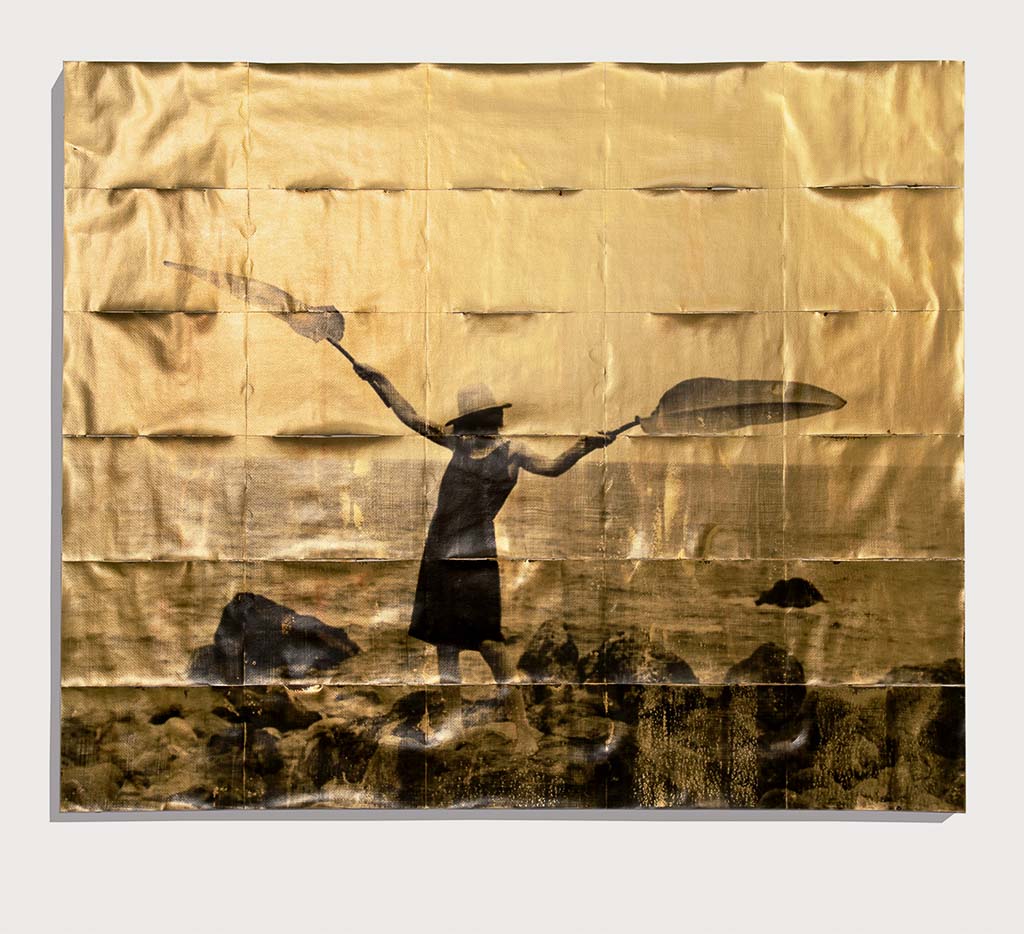
Valentina Murabito – La donna del mare
Valentina Murabito entführt bei 68projects by KORNFELD in eine faszinierende Welt, in der Mythologie, Natur und Fotografie auf außergewöhnliche Weise verschmelzen.
mehr erfahren...


Pause. Reset. Reload. In today’s fast-paced world, we seldom take the time to reenact what is only too familiar in the digital realm of gaming and scrolling. This exhibition is an open invitation for our visitors to imitate this practice and pause, reset, and reload the way they approach visual media. Central to this experience is an enthusiasm and commitment to curiosity and intuition. RESET – Fields of Sensation is a clarion call to all of us who have been consuming but not actually seeing images. The quiet art of sensing is championed in this space in which we perceive and connect. The exhibition offers the receptive visitor a room in which they can open themselves to the sensations of colors and composition to investigate the materials and dynamics of the artworks. A curious mind may discover that a resourceful interaction with art also creates the potential for resetting the dynamics within the gallery space. Each artist in this exhibition allows the observer to discover a variety of connections to art and themselves through intuitively observing and sensing what is right in front of them.
Sensation is perhaps the driving force behind Jaehong Ahn’s creational process. The inception of his paintings is solely guided by the artist’s physical movements. Through automatic painting, Ahn creates abstractions only to then move to figuration. His intuitive motions on the canvas turn into wondrous and sometimes bizarre landscapes. The foreign species and odd landmarks change and undergo continuous metamorphoses, disorientating the observer. Theatrical elements such as stages and curtains, as well as the steadily transforming subjects, remind us that these scenes are carefully constructed imagination and separate themselves from our known visual vocabulary. The contenders who enter this world of tension are often separated and linger, unable to overcome the divide. The theme of separation weaves itself throughout all of Jaehong Ahn’s paintings. Nevertheless, there is always a strong sense of balance. The artworks enter a game of severed and yet balanced conversation, of emerging and being separated. The artist, the canvas, and the viewer are divided forces that isolate and conceal and nevertheless come together in an aspiration for unity.
Vemo Hang’s sculptures and paintings contemplate spatiality and travel across boundaries in a time of rapid pace and overwhelming impressions. Her work is based on transcultural histories and theories, especially the comparisons of European and East Asian thinking through which she links the past to the present and crosses the spatial and temporal boundaries. In this synthesis of knowledge and sensuality, the artist creates atmospheres in which understanding is achieved through intimacy. Her ceramic sculptures create dynamic compositions on the walls, which reference the Go/Weiqi board game. The round shapes invade the room with their expanding fragments. As they disembark, the orbs transcend their formerly limited dimension, exploring finite enclosedness and explosive openness. The color blue prevails in the sculptures and the canvases in this exhibition, exploring notions of the “Blaue Stunde”. Vemo Hang reflects on Berlin’s recent visual condition, which she observed during the pandemic. The sudden reset and impossibility of travel shifted the focus to the immediately local. The imagined places are a harmonious combination of a multitude of independent scenes. Thereby, Vemo Hang finds solutions to bridging spaces and creates a potential for travel between channels.
The artworks by Sabine Laidig satisfy a longing for “less” as they reduce data into grids of lines and mists of color. They are a subtle ode to the sensations of the human eye. The materiality of the artworks has a calculated effect on the observer and creates illusions of space as the artworks seem to vibrate with the weightlessness of color. Her pigment studies and awareness of materiality enable her to honor these without being restricted by color, material or form. The lines drawn with immaculate precision vary in width and interval, resulting in different tonalities of color on every sheet, each with its own steady and stimulating tone. This potent symphony of lines and pigment enter a dialogue with the viewer. Notably, the impression of the artworks depends on the observer’s standpoint, effectively including them in the creation of meaning. In Sabine Laidig’s artworks, precision does not negate warmth, and the grid is not void of personality and narrative but rather a source for experiences of still perception. Despite the concrete and reduced nature of the grid, Laidig’s works are, first and foremost, a sensory experience.
Tatjana Schülke stimulates the viewer with tactile anticipations. The curious tubes, spikes and arches protrude into the space. Her objects radiate expressiveness and personality, yet, they seem guarded and defensive to the intruding gaze. With their ability to balance the tension between reaching out and holding back, these artworks embody sensitivity. The communicative sculptures, reliefs, and wall objects make us intuitively reflect on interpersonal exchange and relationships. Tatjana Schülke creates these artworks from objects she finds in her immediate surroundings. They express enthusiasm for openness and connecting. Thereby, her artworks radiate vitality and human complexity. The unexpected materials such as tubes, toothpicks, yarn, and styrofoam indicate her innate curiosity, which leads her to playfully pursue the expression of inside and outside, order and chaos and visible and hidden. These concepts get unraveled in such nuance through exploring material that the observer cannot help but sense and empathize with these objects.
Paula Böke
Auch spannend für dich: